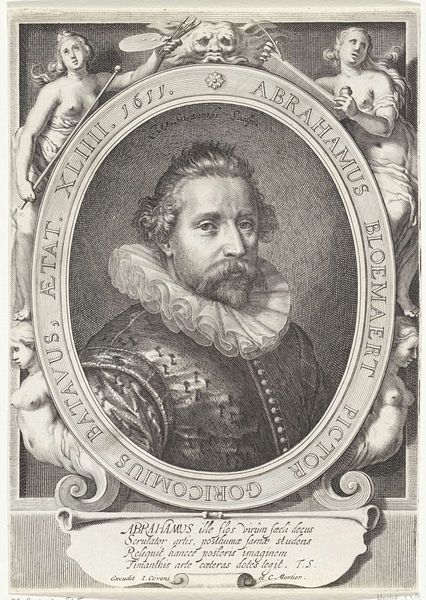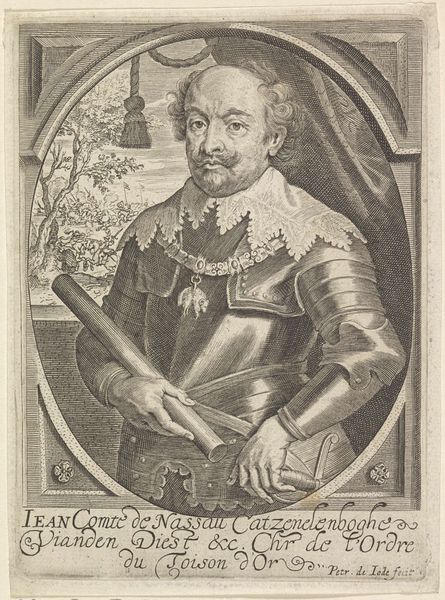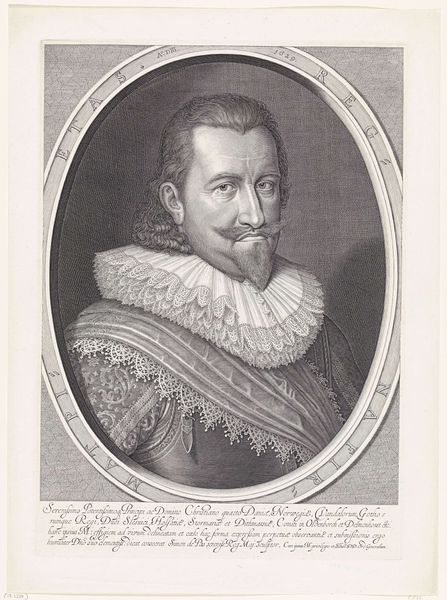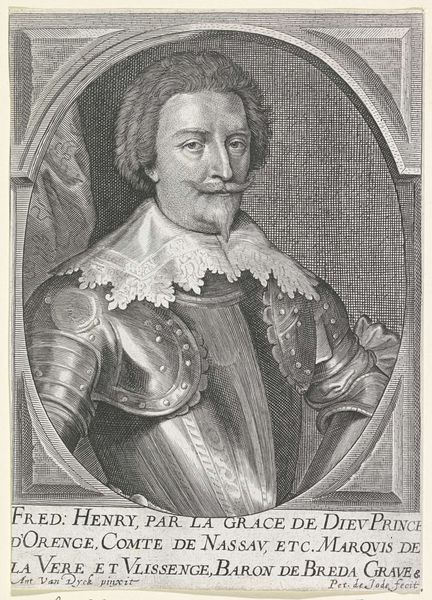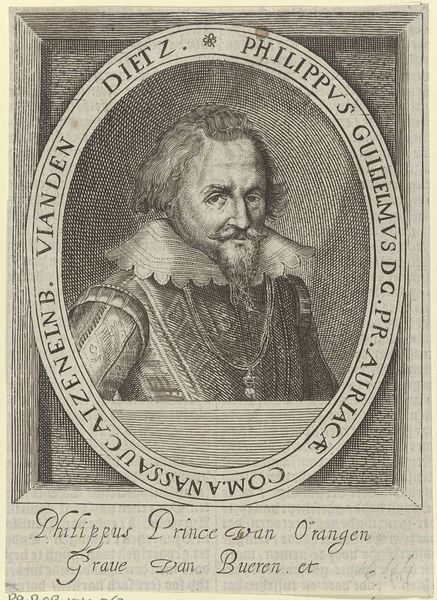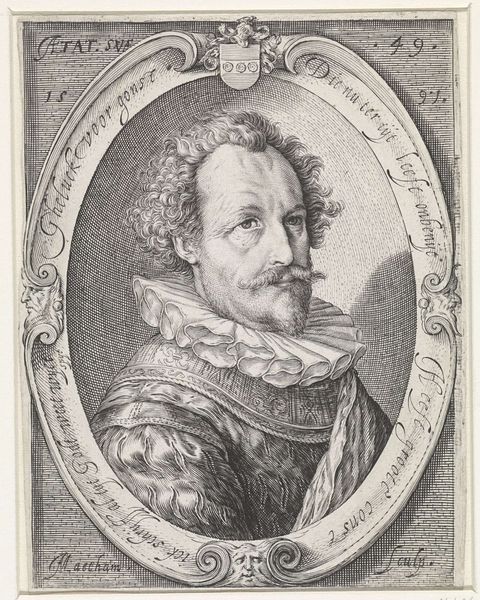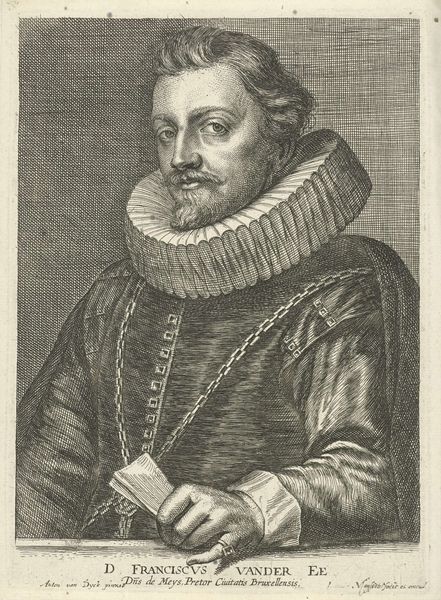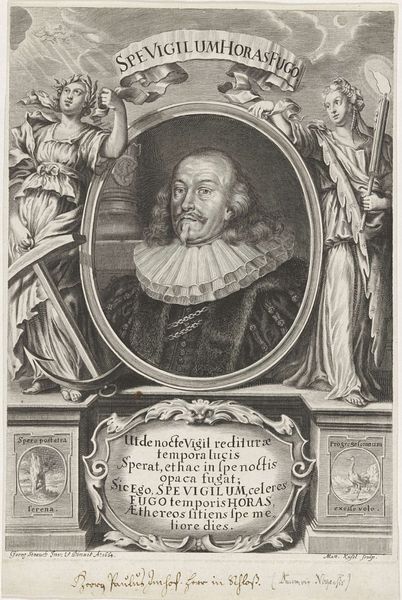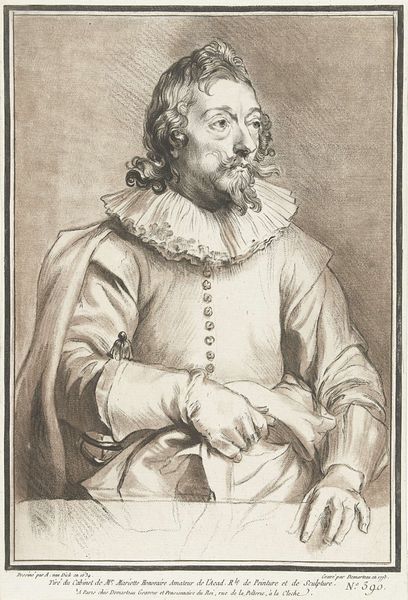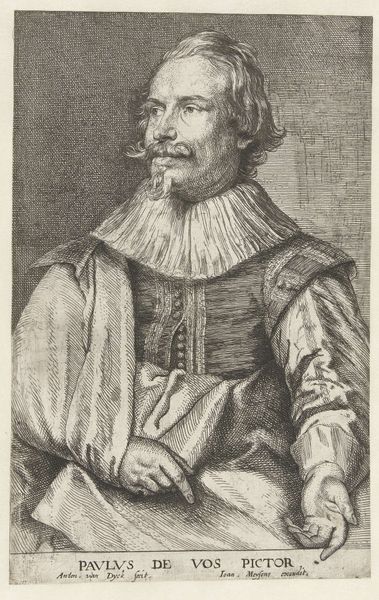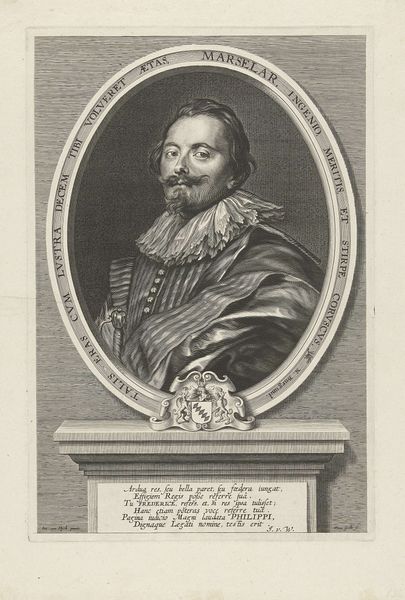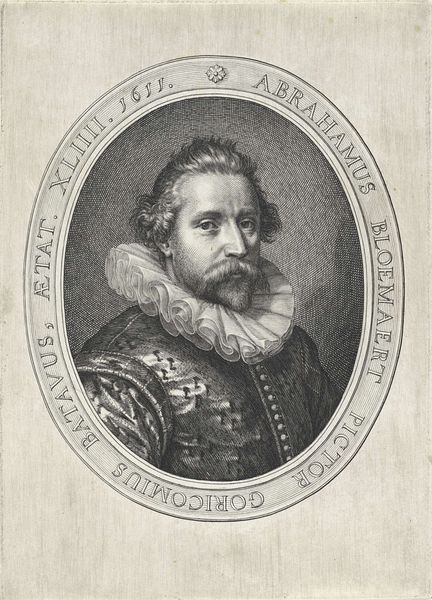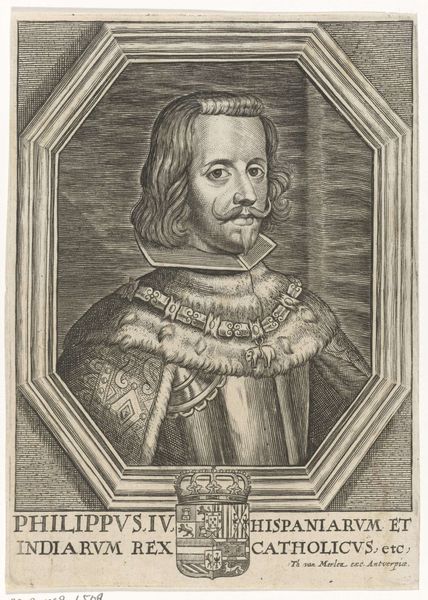
drawing, print, metal, engraving
#
portrait
#
drawing
#
baroque
# print
#
metal
#
old engraving style
#
charcoal drawing
#
portrait drawing
#
history-painting
#
engraving
Dimensions: height 264 mm, width 198 mm
Copyright: Rijks Museum: Open Domain
Curator: We're standing before a remarkable engraving here at the Rijksmuseum, dating from between 1630 and 1677. The work is titled "Portret van Frederik de Marselaer," created by Adriaen Lommelin. Editor: Wow, that's a mouthful! My immediate thought? Serious. He just seems like a profoundly serious man... that frilly collar probably didn't help. Curator: Indeed. De Marselaer was a significant figure, serving as a knight, a Lord of several regions, and a councilor in Brussels. The engraving itself carries potent symbolism tied to his socio-political position. Editor: Symbols! Of course! I see he’s clutching some sort of document with a symbol—anchor, perhaps? Is that about his sea holdings? Maybe he fancied himself a maritime lord, even if he mostly lorded on dry land? It’s hard to tell. Curator: Good eye! The imagery likely alludes to both his lineage and his commitment to public service. The coat of arms reinforces his family's standing, whilst the scroll in his hand serves as both attribute and metaphor, alluding to De Marselaer's advocacy for the well-being and unity within the Habsburg-ruled territory. Note how this ties into the inscriptions on the print border. Editor: Well, "well-being and unity" probably sounds better than “trying to maintain control for a crumbling empire", right? All that Baroque drama trying to pretty up power politics…I still can't get over that ruffled collar though—it just looks so…uncomfortable. Bet he wasn’t feeling much unity after a long day in one of those. Curator: We should think about these material constraints a little more. The collar indicates privilege, an outward sign of adherence to very stringent social performance—and of course to underscore his allegiance to the Habsburg state. Editor: Still, that engraver certainly earned their keep. Imagine the skill needed to render that lace, the texture of his robes...and, oh yes, even that neck contraption, using nothing but lines and dots. It almost tricks you into forgetting you're just staring at black lines on paper. Curator: Yes, Lommelin was quite a talent. But let's not separate form and function, either: as always in art, those textures are as political and historical as they are aesthetic. Editor: Ah, politics always creeping in... Though, okay, you got me thinking. It's amazing how such a simple image can still spark so many questions and connections. All those layers and implications—kinda like the layers of ruffles on *that collar* after all. Curator: Exactly. That is what allows the artwork to invite continuous re-interpretations in relation to new social contexts.
Comments
No comments
Be the first to comment and join the conversation on the ultimate creative platform.
